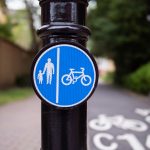
Due to the Covid-19 pandemic, the UK, along with many other countries, went into lockdown. During the first lockdown in the UK, there was a complete ban on real estate transactions and activities. Once the lockdown lifted, there was a sharp rise in transactions in the housing market; however, sellers and buyers were sceptical about the housing market, and rightfully so. Even though the UK government allowed real estate transactions during the second and third lockdown, the damage had already been done. The Covid-19 pandemic drastically changed the demand and supply of real estate in the UK, it impacted tenants and landlords majorly, and of course, it affected the average price of a property in London, and all throughout the country. Here is what the experts have to say about the impact of Covid-19 on the house prices in London.
Covid-19 and the average price of a property in London
As mentioned before, during the first nationwide lockdown, the UK government completely banned all real estate transactions. Once the lockdown was over, and the ban was lifted, people rushed to buy houses in London. In fact, some buyers even purchased homes after viewing them virtually – they did not even wait to see the properties physically. Usually, August is a very slow month in the housing market in London; the estate agents in Stafford will verify that. However, in August 2020, real estate activity in London hit its peak! From April 2020 to April 2021, the average price of a house in London increased by a whopping 6.2 per cent!
Covid-19 and Central London
According to Property Reporter, central London has been impacted positively and negatively. In certain postcodes in central London, experts have seen a 10 per cent fall in the average selling price of homes. St Jame’s and Mayfair saw the biggest decline in the price of the property from the start of the pandemic – here, the price of certain properties fell by a whopping 40 per cent. Kensington also saw a massive fall in the price of the property, where the average price of houses fell by 18 per cent. Other postcodes such as SW1W, W1S and SW1X also saw a double-digit fall in prices. Maybe you need to look beyond these postcodes and start thinking about property valuation in Stafford! On the other hand, there were some areas in Central London that majorly benefited! In the SW1Y postcode, the average selling price of property rose by an astounding 54 per cent during the Covid-19 pandemic. Even certain postcodes in Chelsea saw a massive rise in selling price, specifically SW3 and SW10. If you own property in Central London, it might be time to ask the question at hand, how much is my property worth now?
Stamp duty holiday, buyer preferences and property prices
In order to boost the buyer’s confidence and revive the economy, the UK government announced a stamp duty holiday which was basically a temporary suspension of stamp holiday. However, the stamp duty holiday was started to target the regular housing market as opposed to the high-end property market. While potential buyers and investors who were looking at properties under £500,000 do not have to pay any stamp duty, those looking at high-end properties costing £1.5 million or more will have to pay stamp duty. Hence, there has been a drastic increase in the demand for properties in the regular housing market as buyers are trying to save a few thousand pounds on their first purchase. However, the high-end housing market has not been impacted by the stamp duty holiday.
As more and more people started working from home, the demand for bigger and better homes increased. There was a sudden shift in the buyer’s priority. Instead of looking at properties in central London, potential buyers and homeowners were looking to shift to the boroughs and the outskirts of London. This could explain why certain prime postcodes in central London saw a drastic fall in prices while the average price of houses in other parts of London increased.












